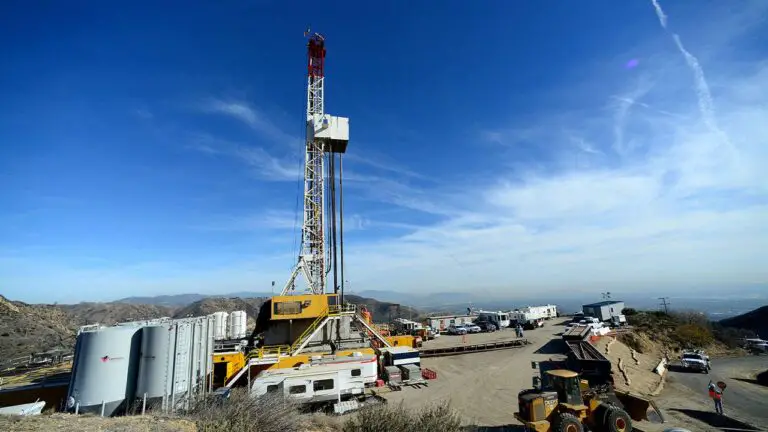California Officials to Vote on Increasing Gas Storage Capacity Despite Past Leak
The California Public Utilities Commission is set to decide this Thursday whether the Aliso Canyon facility should expand its storage of natural gas. This facility, located near Los Angeles, faced a major methane leak in 2015 that released over 120,000 tons of methane and made thousands of nearby residents sick.
The proposal suggests increasing the storage capacity to 70 billion cubic feet, which would help provide Californians with enough natural gas during the winter, following a spike in prices during the previous winter season.
The Aliso Canyon Natural Gas Storage Facility’s expansion plan has triggered protests from residents, environmentalists, and politicians. However, utility companies and state regulators argue that it’s necessary to prevent fuel price increases in the upcoming winter.
Environmental engineer Issam Najm, a resident of Los Angeles’ Porter Ranch suburb affected by the previous leak, opposes the expansion, stating that it poses unnecessary risks to people. He points out that the facility is currently emitting cancer-causing chemicals each day it remains open.
The facility’s opponents, including Democratic lawmakers, believe that California should follow Governor Gavin Newsom’s plan to shut down the facility by 2027 instead of increasing its capacity.
The 2015 gas leak, which took four months to control, released a substantial amount of methane and other gases, causing thousands of residents to evacuate their homes due to health issues. SoCalGas and its parent company, Sempra Energy, agreed to pay settlements to over 35,000 victims in 2021.
U.S. Senator Dianne Feinstein expressed her concern about the expansion proposal, emphasizing the history of disasters associated with the facility. She believes that the decision to increase capacity goes against the goal of shutting down the facility faster.
The California Public Utilities Commission will make the final decision on the expansion plan. Commission staff argue that the increase is necessary to prevent gas shortages and rising prices during the winter.
An administrative law judge proposed allowing Southern California Gas to raise storage capacity to 68.6 billion cubic feet. The facility has a maximum capacity of 86 billion cubic feet.
The field, which uses old wells for gas storage, operated at 50% capacity for years after the leak. The commission began increasing storage in 2020 to ensure a safe and reliable supply for the upcoming winter months.
Environmental organizations, along with Democratic state lawmakers, oppose the expansion due to safety concerns. They highlight that no shortages were reported during the two years when the facility was offline after the leak.
Despite protests, the proposal remains on the table, with the commission and utility companies emphasizing the need to secure gas supplies and prevent price spikes during the upcoming winter season.

